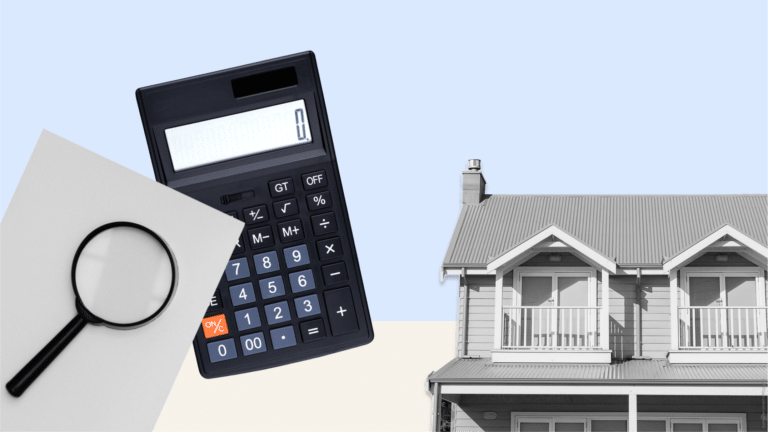The wisdom espoused by some real estate professionals (and occasionally by well-meaning friends and family) goes something like this:
When buying a home, go ahead and spend every cent of what a lender is willing to finance for your mortgage. Homes are expensive. The more you are willing to spend, the more options you have. Of course, borrowing the maximum amount for which you qualify may stretch your budget. Those first few years as a homeowner may be tough. But with future raises, increased equity, and rising property values, you’ll soon be able to pay your mortgage more comfortably. Those first few years spent scraping by will be worth it.
The idea that borrowing the maximum is always in your best financial interest is a myth. One size does not fit all when it comes to home financing.
Debt-to-Income Ratios: How Mortgage Lenders Decide How Much to Offer Homebuyers

Before borrowing every penny a mortgage lender is willing to offer, you’ll want to understand how lenders determine a pre-approval amount.
Mortgage lenders want to make sure that borrowers can pay their mortgages and still have enough money left over every month for all of their other expenses. They do this by calculating the percentage of a borrower’s monthly gross income that will be used toward monthly debt obligations. This is called debt-to-income ratio (DTI).
Mortgage lenders will first determine how much of your gross income you’ll need to cover your potential future housing payment. (That’s your mortgage payment, along with your property taxes and any required homeowners or mortgage insurance). This ratio is called your front-end ratio. The exact cutoff for how-much-is-too-much can vary a bit from lender to lender. But generally, lenders want borrowers to spend less than 28% of their pre-tax income on housing.
Next, lenders calculate your overall debt-to-income ratio. This is sometimes called your back-end ratio. That’s how much of your gross income you spend each month paying back debts. Back-end DTI includes student loans, credit cards, car payments, or any other debt obligations. It also includes your potential future mortgage. If you have no other debts, your front-end and back-end ratios would be the same.
Just like the front-end ratios, the exact cut off for DTI ratios can vary a bit depending on the lender and the particular mortgage program. Ultimately, most lenders want to see borrowers wind up with a DTI of less than 43% (though this can be as high as 50% in some cases).
When deciding how much to offer a potential borrower, mortgage lenders take other factors into consideration, too—most notably, your credit score. People with higher credit scores represent a lower risk to lenders. So lenders are willing to offer borrowers with higher credit scores lower interest rates. But as long as your credit history doesn’t show a history of unpaid debt, late payments, or other serious risk factors, your credit score mostly impacts how much you pay in interest.
The Problem with DTI Ratios

Remember: mortgage lenders use a borrower’s gross income to calculate front-end and back-end debt-to-income ratios, and to determine how much a potential borrower can afford.
For most of us, a significant chunk of our gross income goes toward paying federal, state, and local income tax. Taxes alone take a double-digit bite out of just about everyone’s gross income. That leaves homebuyers with less ‘extra’ money than their DTI ratios might make it seem.
On top of that, homebuyers still have to eat, pay the electric bill, occasionally purchase new shoes, fly home for the holidays, or pay for braces and cello lessons for their kids. Just how tight your budget can be before you are uncomfortable varies from person to person. But it’s important to decide for yourself how much you’re willing to spend and what sort of financial sacrifices you’re willing to make to be a homeowner.
Lenders Determine How Much You Can Borrow, But Only You Can Determine How Much You *Should* Spend on Your Home

Homeowners who take on too much debt risk years of unhappiness and potential foreclosure. Letting your mortgage lender determine exactly how much home you can afford is a little like letting a room full of hungry teenagers decide how much pizza to order. Of course, mortgage lenders use slightly more sophisticated models for determining how much you can afford to borrow, but if you aren’t careful, it’s easy to wind up with more than you need, and a larger bill than you really wanted to pay.
Getting pre-approved for a mortgage when you begin looking for a home in earnest is smart. But the pre-approval amount is just one part of determining your target home price. Taking some time early in your home buying journey to create your own budget can save you years of misery and potential financial trouble down the road, especially given the variability of the current conditions and concerns around steady income. It’s important to think through this decision carefully. While only you can know what you’re comfortable spending, we’ve got experts on standby to help guide you if you need it.
Ready to start your journey? Get started with Morty.







